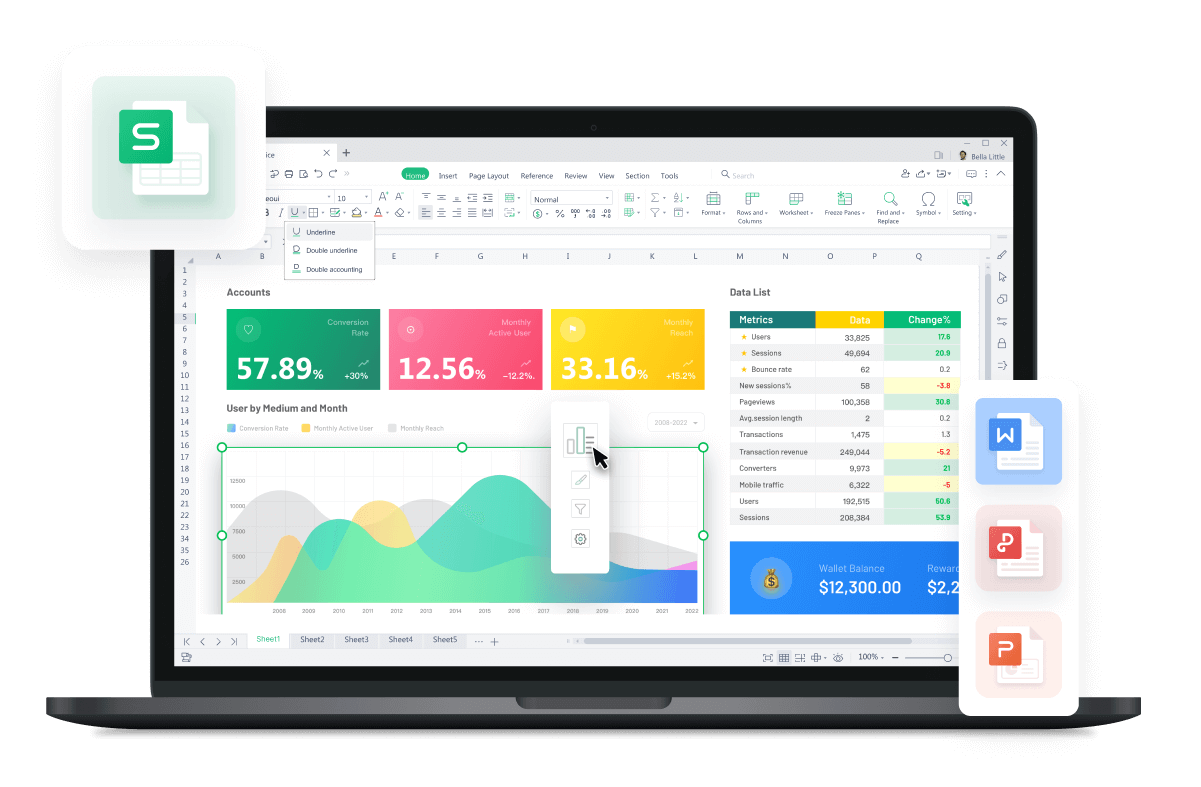Free All-in-One Office Suite with PDF Editor
Edit Word, Excel, and PPT for FREE.
Read, edit, and convert PDFs with the powerful PDF toolkit.
Microsoft-like interface, easy to use.
Windows • MacOS • Linux • iOS • Android

Table rows, columns, cells, and status bar
Uploaded time: September 13, 2021 Difficulty Beginner
Table rows, columns, cells, and status bar

Table rows, columns, cells, and status bar
In the last video, we just talked about the worksheet and workbook in the WPS Spreadsheet. So in this video, we will learn about the Spreadsheet interface elements: rows, columns, cells, and those tools in the lower status bar.
On the left is the row, and the marked numbers 1, 2, and 3 are called the row number. Above is the column, and the marked numbers A, B, and C are called the column number. The grids in the middle are called cells.
When expressing the position of a cell, we use column label + row number. We call the cell in the first row of the first column A1 and the second row of the second column B2. We can also see the cell we selected in the name box in the upper left corner. Just enter the column label + row number in the name box, to quickly locate the specified cell. For example, if we type F13 and press the Enter key, we can quickly locate the F13 cell.
The right side of the name box is the edit bar of the formula. We can enter the formula we want in the edit bar. Enter 1 in cell A1, and enter 10 in cell B1. Place the mouse at C1 and enter the formula =A1+B1. Now press Enter to get the answer. Now we can view the formula in the formula edit bar. Click the Browse Formula Result button, then the function in the edit bar will become a numerical result of the operation, which is uneditable. If the operation interface does not display the Formula Bar interface, we can select Formula Bar in the View tab to display the edit bar.
Here are some shortcut buttons on the right side of the lower status bar.
The first one is Auto Backup. It can prevent file loss due to computer crashes. The second is Reading Layout. It can help us to locate the row and the name of the column quickly. Just click on the needed cell, then we can know its information. We can also change its color if we want.
The third is Normal View. Now, this is the Normal View page. The fourth is Page Layout View. Here, we can see how the printed document will look. This is a good way to check out where pages begin and end and see any headers/footers on the page.
The fifth is Page Break Preview. Here, we can view a preview of where pages will break when this workbook is printed. If you want to learn more about the usage of this feature, you are welcome to join our WPS Academy to learn more.
The sixth is Eye Protection Mode. Select Eye Protection Mode, then the page will turn green. Select the Dark Mode, then the page will turn gray. Select Light Mode, then the page will return to normal colors.
The Zoom scrollbar can quickly adjust the proportion of view display zoom in and out.
These are some basic elements of the Spreadsheet interface. Did you get it?
To be an office excel advancers, you could learn how to use WPS Office Spreadsheet online in WPS Academy.

Does this video help you?